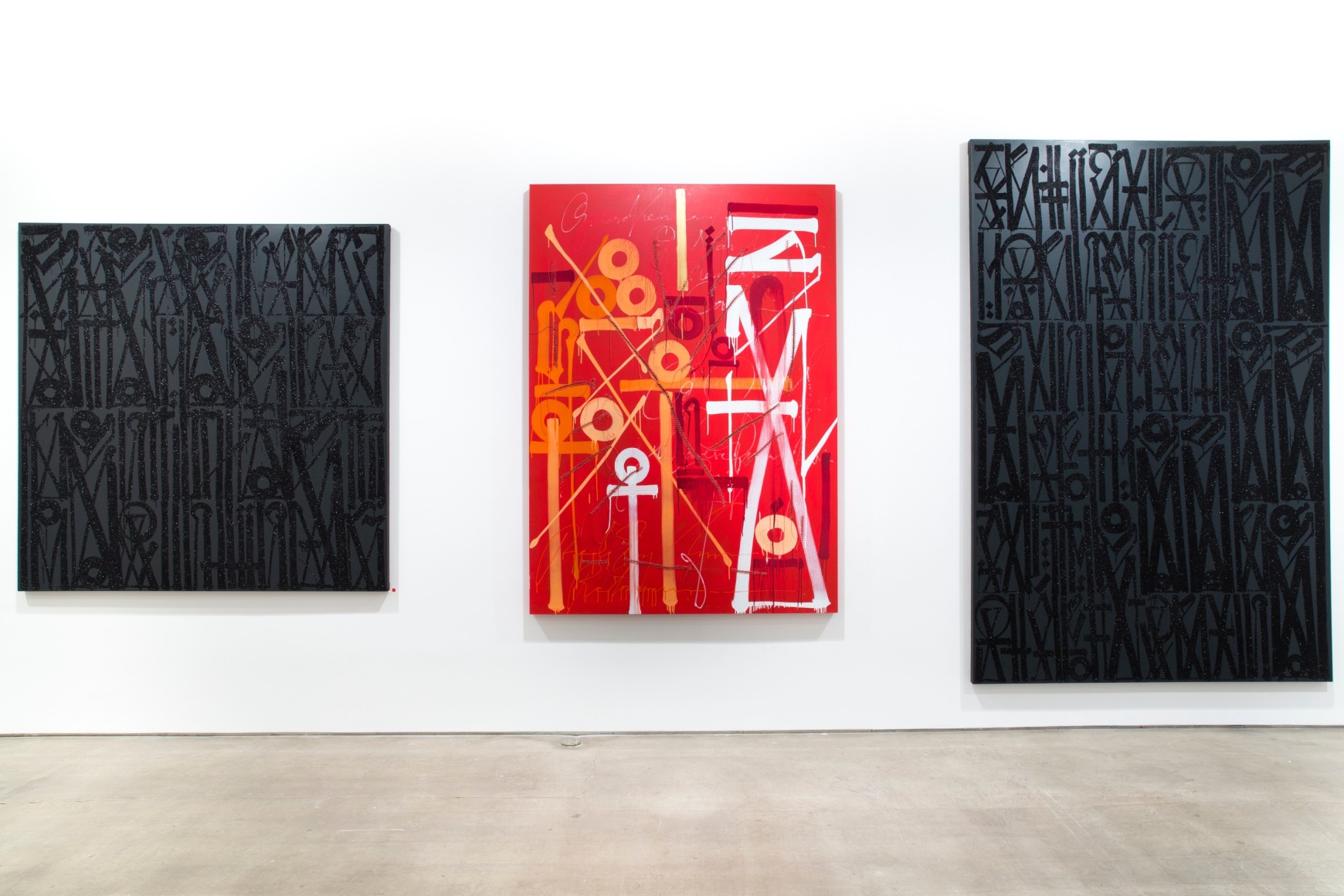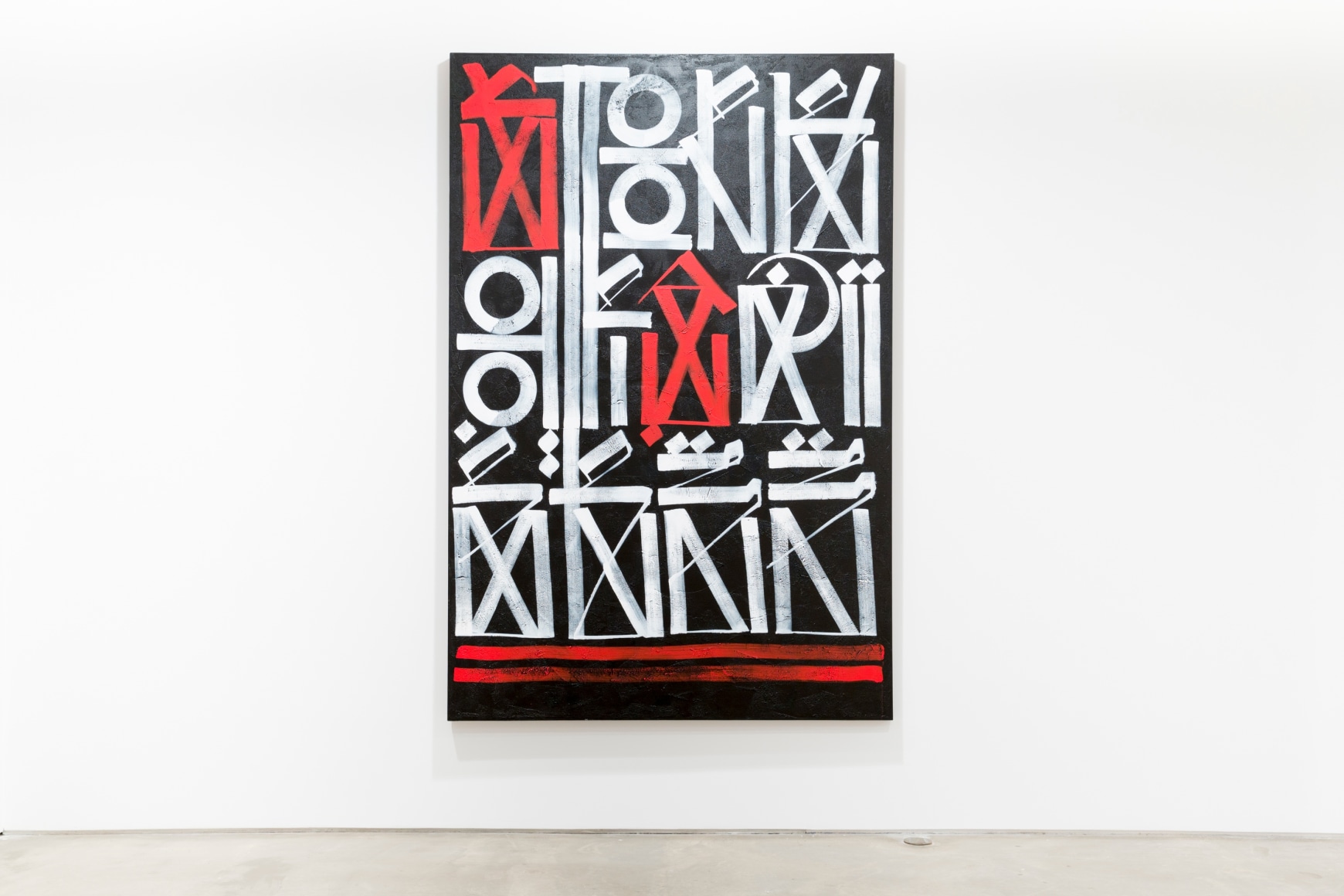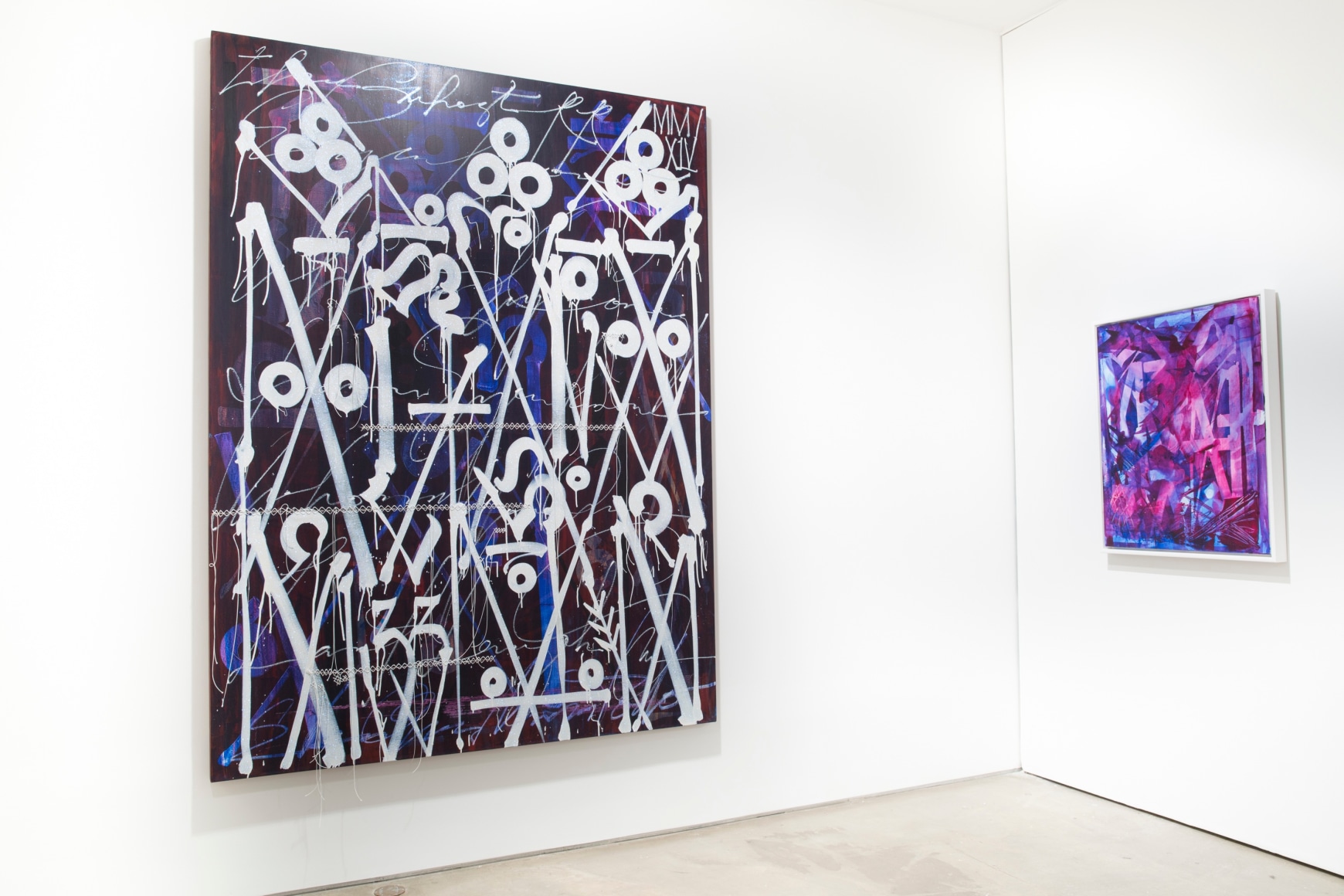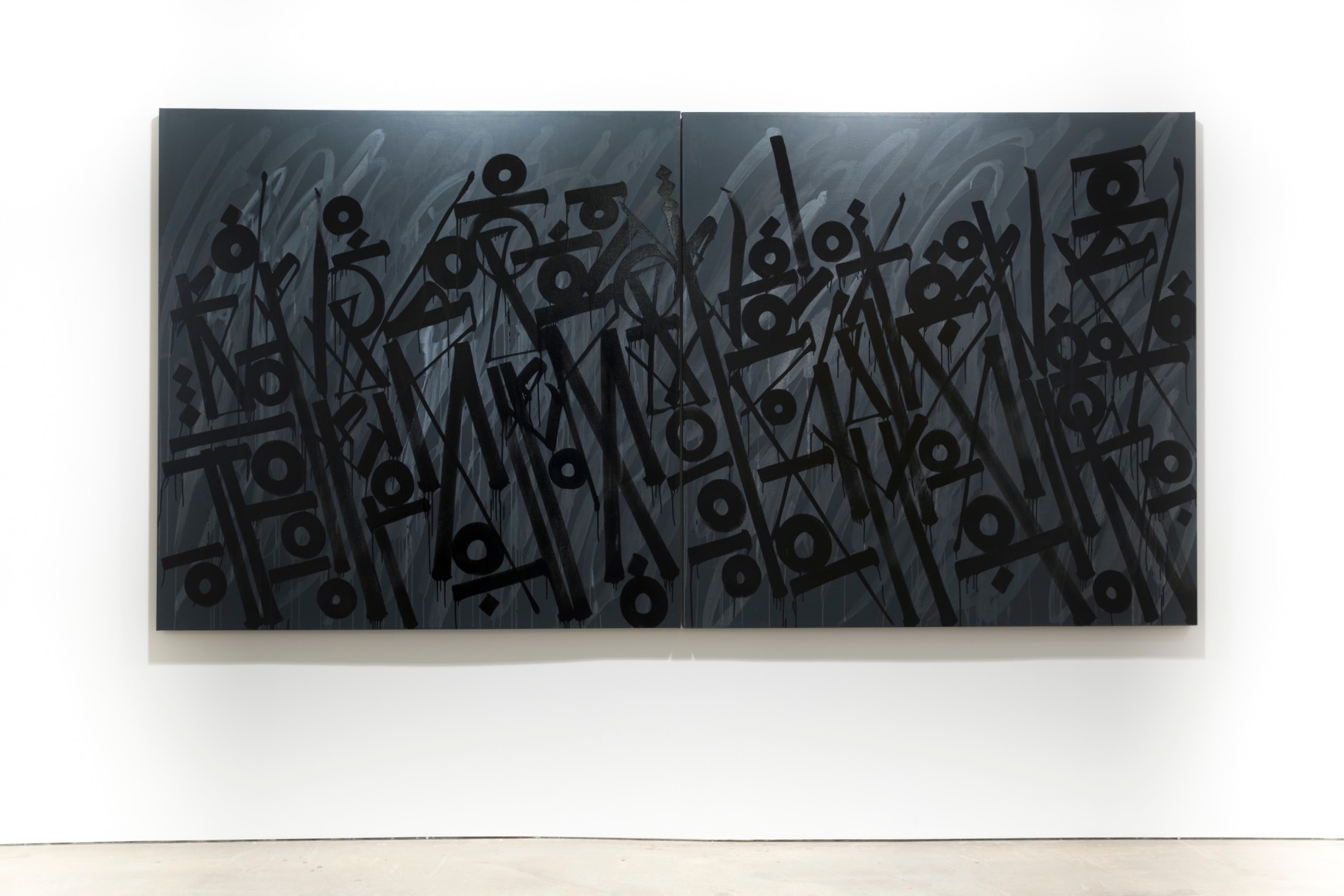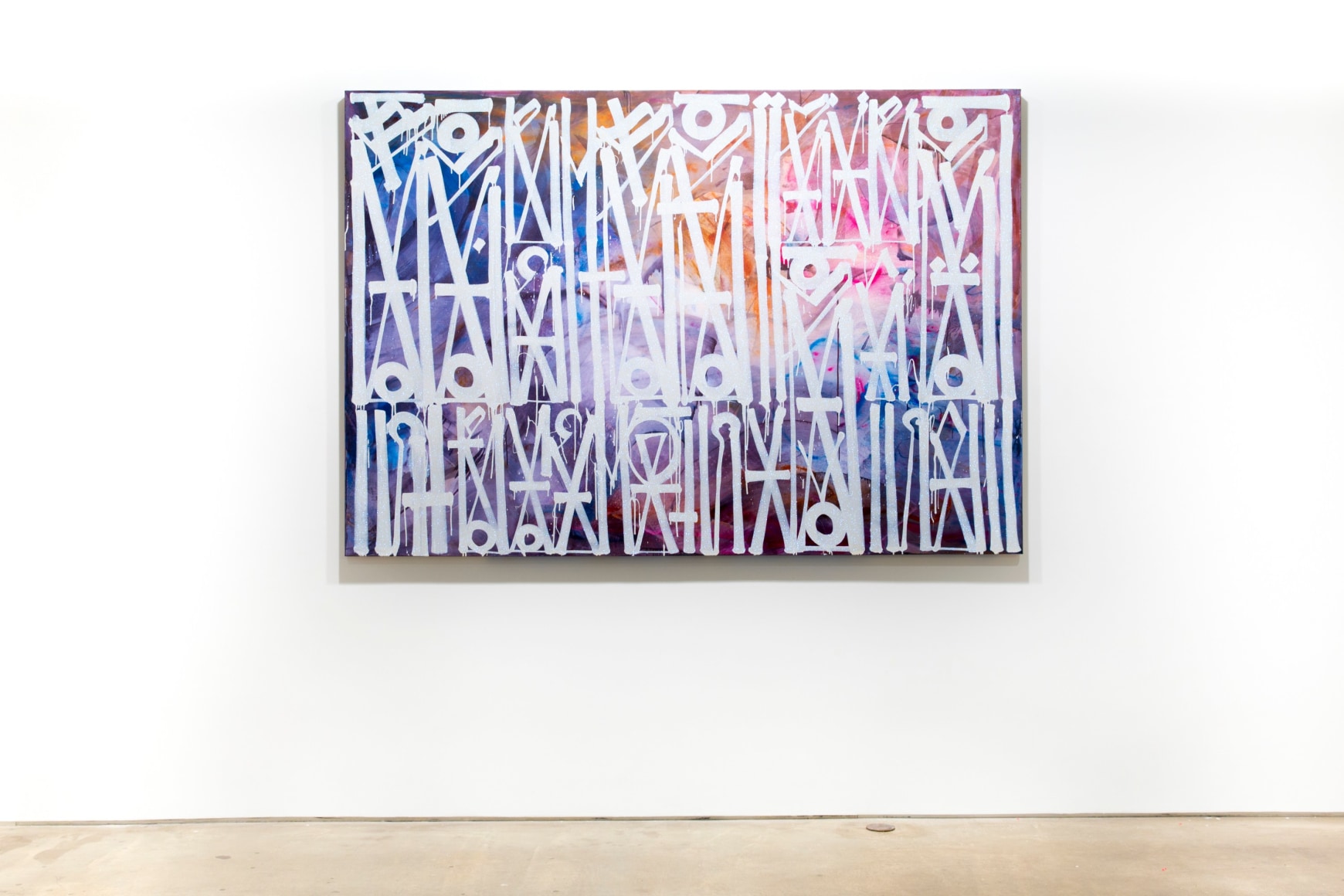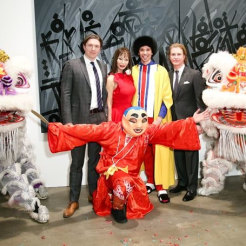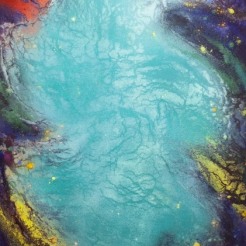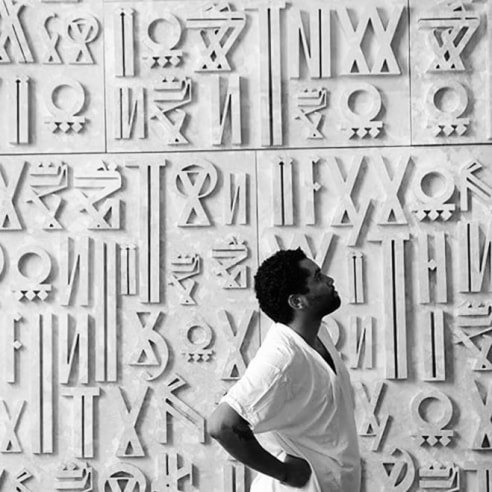
‘We are all in the gutter, but some of us are looking at the stars.’
-Oscar Wilde
Marquis Lewis, known by his internationally-recognized tag RETNA, accesses spaces between
typographic, text-based imagery and abstract esoteric states using a singular, mysterious script.
Each block of text is a sophisticated system of hieroglyphs, calligraphy and illuminated lettering.
With influences extracted from Arabic, Egyptian, Hebrew, Anglo-Saxon (or Old English) and
Native American mythologies, RETNA's unique vocabulary communicates a personal form of
poetry; one that reflects the harsh realities of urban life, while granting itself access to
metaphysical considerations. RETNA employs ancient totemic symbologies as a baseline,
overlaid with rhythms from the urban jungle. These are sourced from his youth in Los Angeles,
born from Pipil (western indigenous El Salvadorian), Cherokee, Spaniard and African-American
bloodlines. These subcultures factor into the physical product of his labors, often accompanied
in the studio or on the street by a stream of sounds (whether it be music, ambient city noises or
anonymous passers-by). It is this multimedia experience that is laid onto the painted surface for
RETNA: auditory and visual content manifested in real-time.
As the dynamic of street art within the gentrified urban structure become increasingly blurred
and complex, their foundational beliefs and symbols will take on new meanings. RETNA’s work
reflects these changes with every successive project. Whether staging an international traveling
exhibition appealing to the perpetually anonymous, high-roller commercial collector or showing
alongside artists such as Keith Haring, Os Gêmeos, and Barry McGee on the famed East
Village Houston-Bowery wall, RETNA’s ultimate aim is carefully concealed. One certainty,
however, is his dedication to an artistic practice rather than abandoning principle for principal.
RETNA’s language is markedly softer in tone and appearance than more traditional forms of
street graffiti: the elegant swoops of ink-like letters and the poetic statements themselves
seemingly adhere to messages of intellectual contemplation and restraint. RETNA’s use of a
feather-tipped paintbrush owes to the airy movement of the characters. According to the artist,
this conscious choice of material is also a nod to the Spirit of the Falcon, an ancient Egyptian
totemic emblem signifying success and victory. A steady stream of references to victory and
transcendence of worldly hardships reside in his work, perhaps in and of itself a collective plea
from the depths of the streets to the canopy of fame and fortune. At the risk of delving too
deeply into new-age philosophy or potentially alienating a base audience rooted specifically in
urban environments, RETNA’s messages are masked in ciphers: words and meanings that are
never immediately revealed nor capable of being accurately translated. Even those closest to
him have only inklings of his gleanings in concrete form, as he continues to develop a dedicated
language straddling the aesthetic borders of street art and academic-grade contemporary art.
Apart from the letters being physically graceful and the content of his messages profound,
RETNA’s practice has grown beyond letters and words. His letters have been shaped into three-
dimensional sculptures (similar to Robert Indiana’s stacked messages), they have graced the
bodies of fashion models as body paint, and have served as textbook-like illuminations in
conjunction with figurative images from longtime collaborator El Mac. Whether he will pursue
strictly abstract permutations of his signature style remains to be seen. For the moment, even if
the content of RETNA’s language evades the typical viewer, the instant connection to the
mystique of Antiquity is potent. The messages, themselves, are not meant to be overly cryptic.
What RETNA asks of his audience is a heightened sense of aesthetic perception. Beyond the
object on its own, RETNA’s work is meant (like any well-executed painting) to evoke immersive
contemplation. Narratives are present, but they are not immediately visible. The artist’s
sensibilities and personal tastes are not immediately discernible in the work, which owes to a
professionalism in distancing an artistic life from a private persona.
RETNA’s studio practice retains the forcefulness found in the processes of making street-based
art. Sensations of conflict, loss and the shadow of law enforcement are all cited as RETNA's
motivations in creating work both on the streets and in the studio. All the while, his focus is set
on contributing to the full spectrum (from academic to commercial) of contemporary art; a field
that, in and of itself, requires swift adaptation to ensure survival and longevity. RETNA notes
that his most common media formats are based in painting: acrylic, enamel, aerosols and oils.
With the work anchored in typographic forms, the tools and methodologies of the painter are
key. The biography in RETNA’s work lies in the persistence of the medium transposed to an
arena outside of the closed gallery space. While the ‘white cube’ atmosphere is certainly an
appropriate venue for the artist’s oeuvre, it is neither prioritized nor preferred.
Like other influential street artists such as Banksy, Shepard Fairey, Basquiat and Keith Haring,
RETNA maintains a devotion to an aesthetic reaching further than the gallery or institution. The
source, the spring for RETNA, is the city. He possesses a keen understanding of the
contemporary art world, while maintaining a measured independence as a practicing, and
continuously developing, artist.
-Shana Beth Mason
Shana Beth Mason is a contemporary art critic based in Brooklyn. She received her M.A. in the
History of Art & Connoisseurship (Modern & Contemporary Art) from Christie's Education
London. She contributes to publications and media outlets including ArtVoices Los Angeles, The
Brooklyn Rail, Kunstforum.as (Oslo), The Miami Rail, San Francisco Arts Quarterly,
thisistomorrow.info (London), Whitehot Magazine, and Live From Midori House for Monocle 24
Radio. She has lectured at The University of Arizona's College of Fine Art Professionalism & Art
Lecture Series, Florida International University's Contemporary Art and Theory MFA Program in
the Visual Arts, and Christie's Education London: From Passion to Profession Alumni Lecture
Series.

